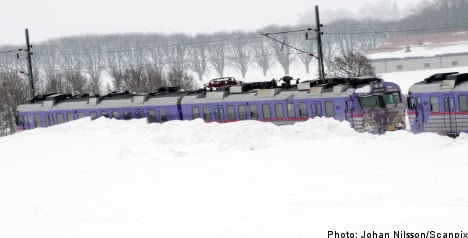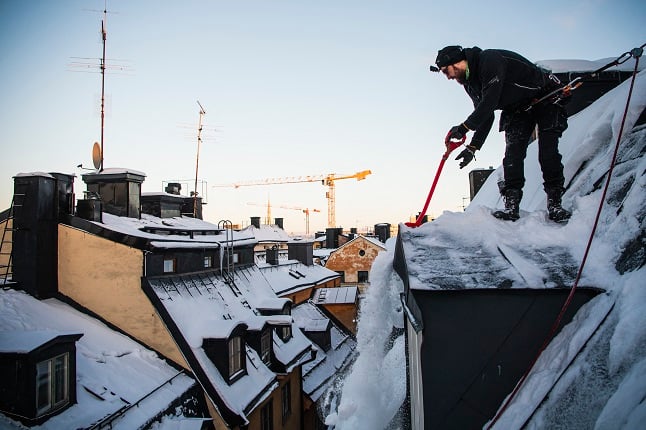Authorities are still coming to grips with the big chill, resulting in delayed or cancelled public transport, snow-laden roofs, and griping citizens.
You don’t even need to speak Swedish to understand irritated conversations on packed trains and buses. Commuters are complaining about the lack of preparedness by authorities as trains and buses run late or are cancelled.
Temperatures are rising over the weekend in many parts of the country, but problems continue. A key train line between Malmö and Simrishamn in southern Sweden is still blocked by snow drifts, while transport in other parts of the country is subject to delays. The southern line is expected to be operational on Sunday night.
The manifold problems have led to editorials in daily newspapers – this time in Dagens Nyheter, the largest circulating morning daily. The newspaper blames citizens to a certain extent: “a motorist who parks a bit onto a sidewalk makes snow removal more difficult.”
More importantly, the newspaper tackles the problem of where to dump shoveled snow. Both Swedish and European Community authorities forbid dumping into waterways because of environmental hazards.
But Dagens Nyheter suggests that it is far better to drop the stuff into a big Swedish lake like Mälaren than construct expensive snow depots. “The quality of water in Mälaren is in fact excellent.” No serious problem, says the newspaper.



 Please whitelist us to continue reading.
Please whitelist us to continue reading.
Member comments